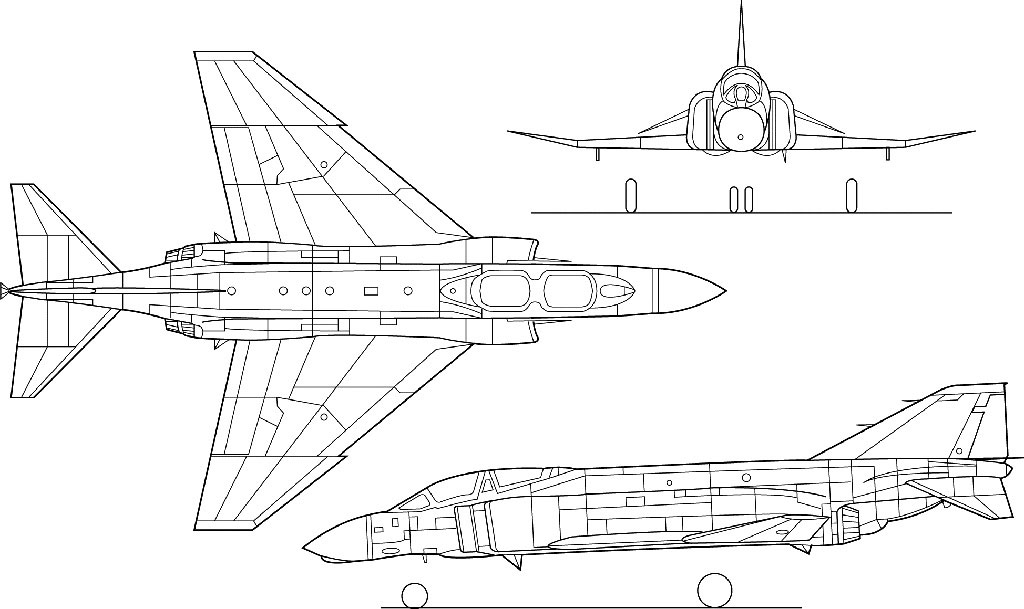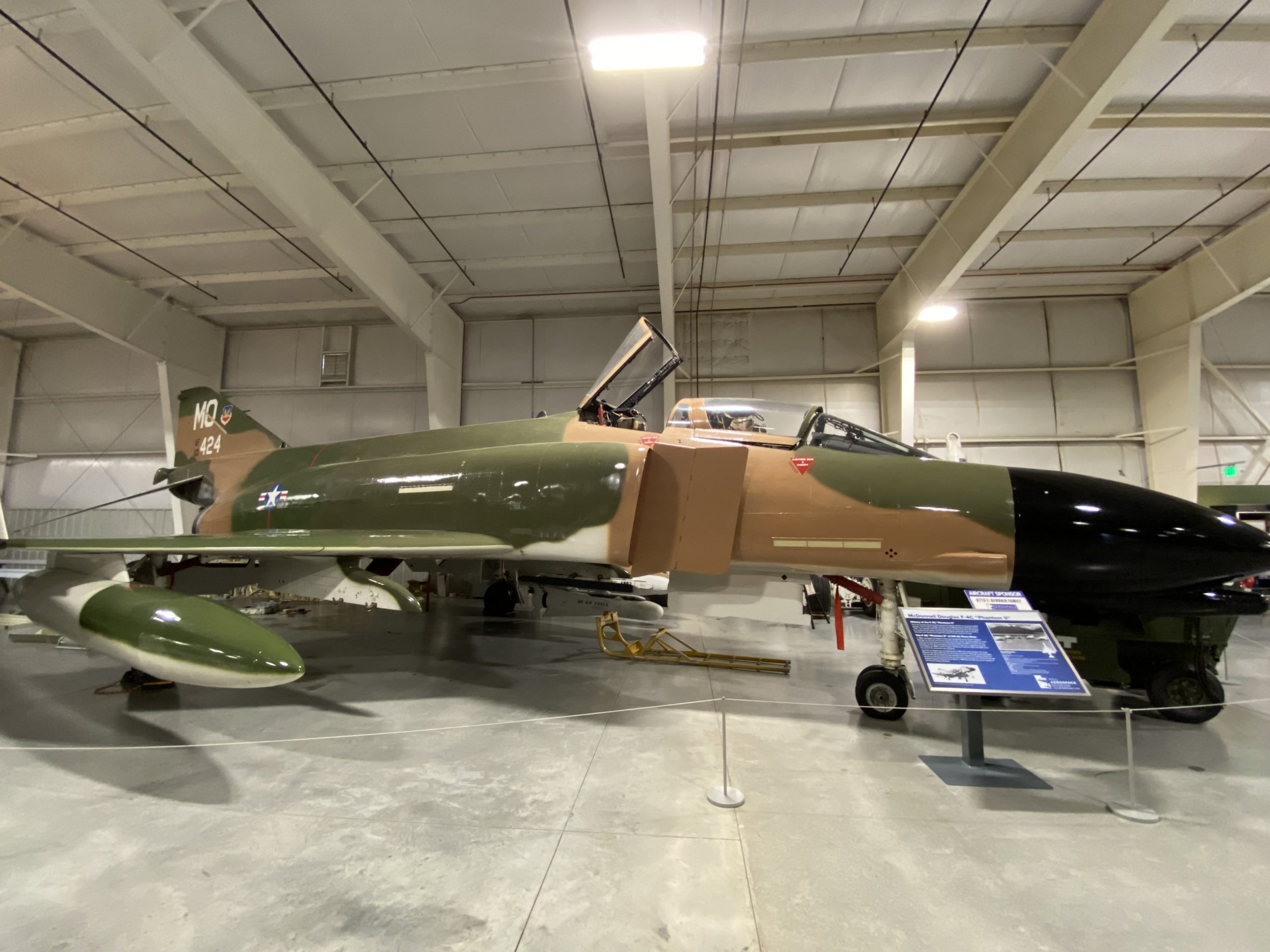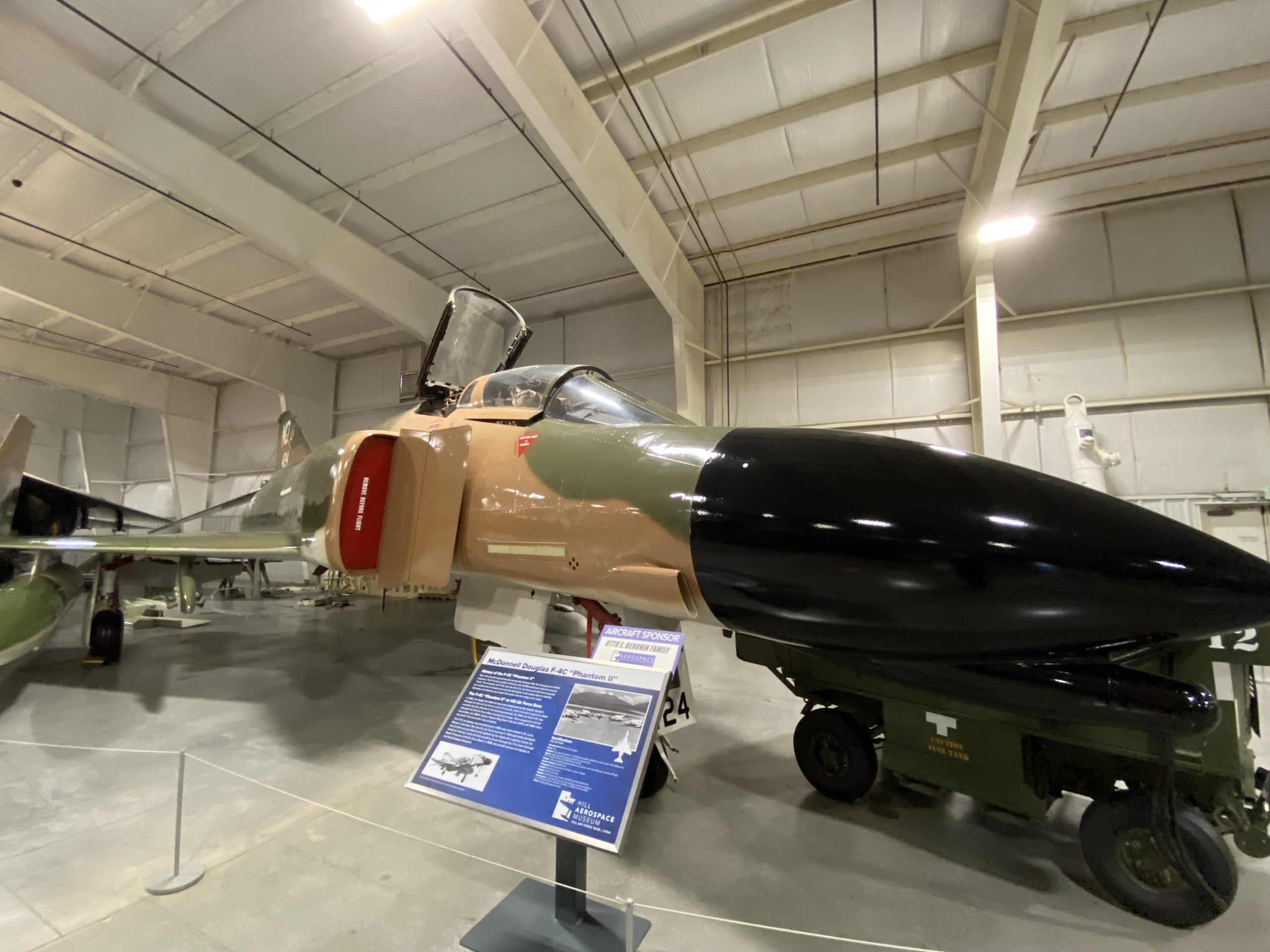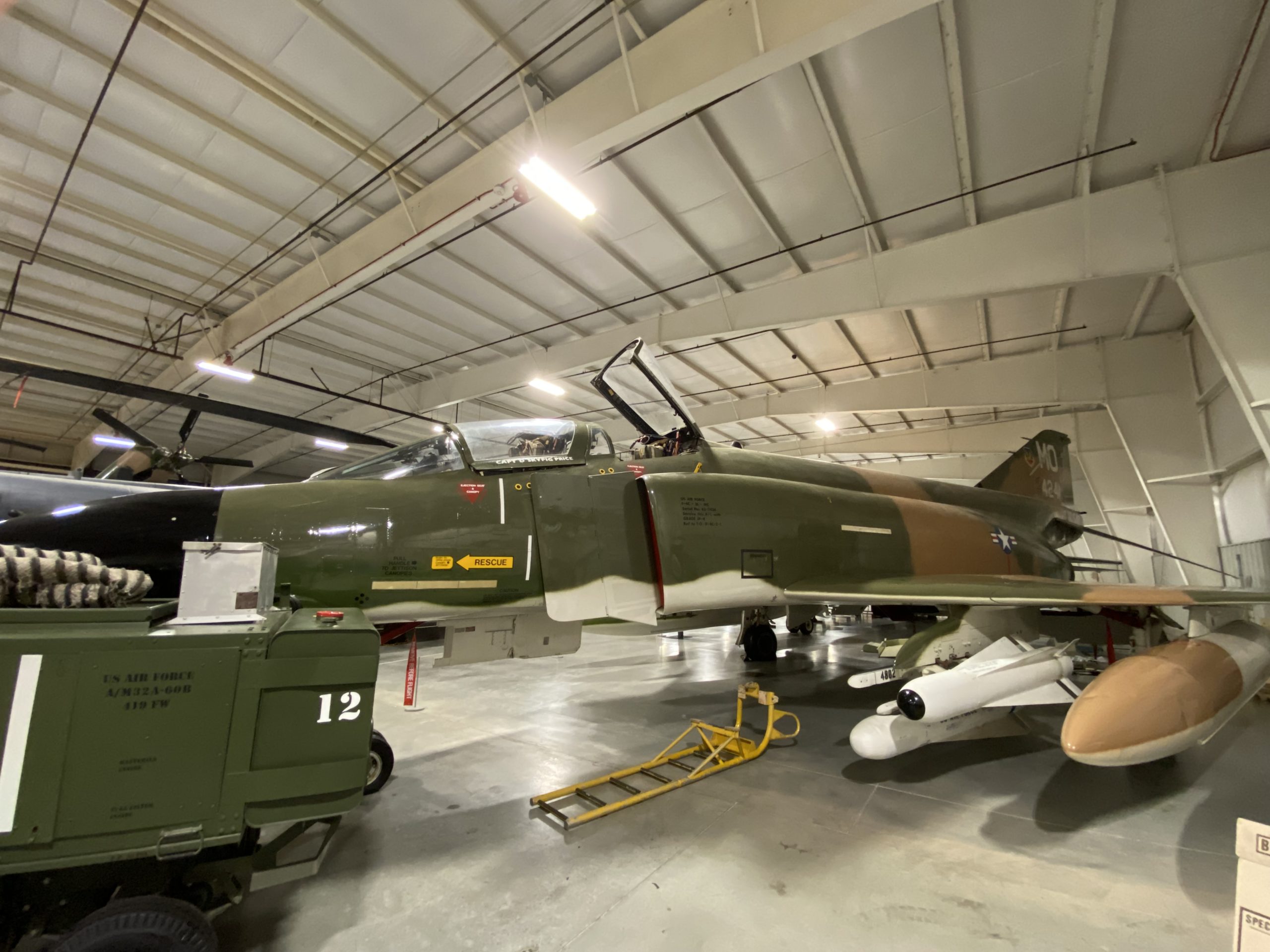
McDonnell Douglas F-4C Phantom II
Serial Number: 64-0664
Manufacturer: McDonnell Douglas
Crew: Two
Engines: Two General Electric J79-GE-15 turbojets; 17,000 pounds thrust each in afterburner
Wingspan: 38 feet 5 inches (27 feet 7 inches folded)
Length: 58 feet 3 inches
Height: 16 feet 6 inches
Weight: 28,000 pounds (empty); 58,000 pounds (maximum)
Speed: 590 mph at 35,000 feet (cruising); 1,400 mph at 40,000 feet (maximum)
Range: 1,750 miles ferry mission with one 600-gallon and two 370-gallons
Service Ceiling: 59,600 feet
Armament: Up to 16,000 pounds of externally-carried, nuclear or conventional bombs, missiles, rockets or 20mm cannon pods
Cost: $2,200,000 (approximate)




